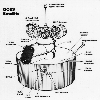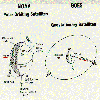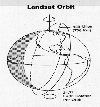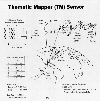 Satellite orbit period vs. orbit radius.
Satellite orbit period vs. orbit radius.
 Satellite orbit period vs. orbit radius, continued.
Satellite orbit period vs. orbit radius, continued.
 Height conditions for a geostationary satellite.
Height conditions for a geostationary satellite.
 One-polar soundings for 00Z map.
One-polar soundings for 00Z map.
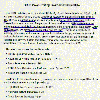 TIROS polar-orbiting environmental satellite.
TIROS polar-orbiting environmental satellite.
 Fundamental polar satellite products: AVHRR
Fundamental polar satellite products: AVHRR
 Two-polar soundings for 00Z map.
Two-polar soundings for 00Z map.
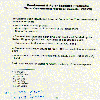 Fundamental polar satellite products: TIROS operational vertical sounder.
Fundamental polar satellite products: TIROS operational vertical sounder.
 Fundamental polar satellite products: TVOS.
Fundamental polar satellite products: TVOS.
 Summary of fundamental polar-orbiting satellite products.
Summary of fundamental polar-orbiting satellite products.
 Derived polar satellite products.
Derived polar satellite products.
 Multispectral Scanner (MSS) sensor.
Multispectral Scanner (MSS) sensor.
Geostationary Operational Environmental Satellites (GOES)
For the special case of when the period of rotation exactly matches the rotational period of the earth (24 hours) and if the satellite is placed in orbit over the equator, then it will appear (when viewed from the earth) to be stationary over a particular point on the earth. This unique condition requires that the height of the satellite above the earth should be (see accompanying figure)h = [(G*ME)/(T/2pi)2]1/3 - RE
The position for such a satellite is about 36,000 km (22,300 miles) above a fixed point on the earth's surface known as the sub-satellite point. These satellites have the advantage that tracking devices are not required to receive their signals, so fixed dishes, similar to a typical TV dish, are suitable for transmitting and receiving signals from these satellites. Their large distance from the earth provide an advantageous perspective for geostationary satellites to view the entire face of the earth simultaneously, which is particularly useful for snapshots of large-scale cloud patterns. GOES satellites are placed in stationary earth orbits at locations designed to give maximum coverage for the particular application. For example, the US National Oceanic and Atmospheric Administration has 2 GOES satellites, one over the equator at 75 o W and the other at 135 o W. These two satellites give coverage of +/- 50o latitude and longitude from the sub-satellite point, which allows continuous coverage of the continental US and adjacent oceans. In periods when one satellite fails, the other can be moved to 100 o W, which gives suitable coverage over the continental US, but fails to give data from the northeast Pacific Ocean, from which region storms frequently enter the US. Data received from the GOES satellites may be of several types. Image (picture) data in both visible (reflected solar light) and infrared (emitted from the earth, atmosphere, water vapor,and clouds) are recorded by the Visible and Infrared Spin Scan Radiometer (VISSR). The VISSR Atmospheric Sounder (VAS) measures the vertical structure of temperature and water vapor in the atmosphere for initializing weather forecast models. The GOES also has a Space Environment Monitor (SEM) for monitoring earth magnetic fields, solar storms, and sunspots. Some weather-related products derived from GOES data include:
- precipitation estimates
- wind derived from cloud motion
- sea-surface temperature
- vertical profile of moisture
- snow cover
- cloud-top height
Polar-Orbiting Satellites
A disadvantage of geostationary satellites is that their large distance from the earth's surface compromises their ability to capture fine detailed resolution of the planet surface. Satellites put in low earth orbit, typically 850 km (531 miles) above the surface, can resolve topographic and other environmental features as small as 1 km, and perhaps even much smaller. However, this close proximity to the earth's surface limits their field of view to a swath about 2,500 km (1,560 miles) wide as the satellite orbits the planet. Maximum areal coverage is achieved if the satellite orbits from pole to pole. By use of the last equation on of the height derivation, with a satellite height above ground of 850 km, we get an orbital period of about 100 minutes. The satellite orbiting from pole to pole crosses the equator going from south to north every 100 minutes, and between these equator crossings the planet will have rotated by 28.8o. This allows the satellite to view a new swath that is adjacent to the west of the swath from the previous pass. By manipulating the height of the satellite, as can be seen from the equation for satellite period, the orbital period can be adjusted to give the desired degree of overlap between adjacent sweeps across the equator. Polar orbiting satellites are sufficiently close to the earth's surface to acquire high resolution data. Polar orbiting satellites, like GOES, have vertical sounding units for monitoring temperature and moisture. A second type of instrument on polar orbiting satellites is the radiometer, which measures energy at individual wavelengths of both visible and infrared radiation. The Advanced Very High Resolution Radiometer (AVHRR)senses data in 5 different channels at both 1 km and 4 km resolution. Examples of data from the AVHRR are given in the accompanying figure. Polar orbiting satellites also provide image data for a variety of environmental assessment needs and space environmental monitors similar to those on the GOES satellites. Gathering weather data for use in initializing weather forecasts requires at least daily and hopefully twice daily or more frequent observations. By placing two companion satellites in synchronous low polar orbits, we can acquire data over the entire surface of the earth on a daily (or more frequent) basis. A companion pair of polar orbiting satellites can be synchronized (called sun synchronous) so that one passes over the particular location in the morning and the other passes overhead at this location in the early evening. Note that the converging tracks of adjacent orbits give multiple measurements in polar regions. Each satellite takes about 600 vertical profiles of measurements each day. Each profile of measurements includes temperature at 15 levels, precipitable water at 3 levels, total column ozone, cloud cover, and tropopause height. An example of data derived from a sounder is given in the accompanying figure. By making such measurements over each of the points in a 3-dimensional volume of atmosphere, polar-orbiting satellites provide data for use in computer models used for weather forecasts. A summary of fundamental products of polar orbiting satellites are given in the accompanying figure and derived satellite products in the following figure.A special NASA polar orbiting satellite, no longer in operation but from which data are still used, is the Landsat satellite which had a multispectral scanning sensor. Its very low orbit of 706 km (438 miles) allowed it to get very high resolution images of the earth as is shown for Detroit. Another instrument, the thematic mapper operated in both visible and infrared to give detailed land surface images.
International Deployment of Satellites
Several countries now have satellites in operation (Conway et al, 1997). Russia operates a series of polar orbiting satellites known as Sich/OKEAN (with the Ukraine), the METEOR series, Resors, and MIR -Priroda. Russia also operates a geostationary satellite known as GOMS that transmits infrared images and standard weather maps. China operates the Feng Yun polar orbiter that transmits imagery (pictures) from both visible and infrared sensors. Japan operates the geostationary meteorological satellite (GMS) with provides visible and infrared images over the western Pacific Ocean, East Asia, and Australia. Japan also has a Marine Observation Satellite (MOS) and, jointly with the US, measures rainfall remotely with the Tropical Rainfall Measuring Mission (TRMM). The Indian government operates a geostationary satellite providing distribution of weather maps. The METEOSAT series of geostationary satellites operated by the European Space Agency provides imagery and weather map distribution over Europe and Africa. The Europeans also have the ERS series and Envisat. Canada operates Radarsat, a synthetic aperture radar (SAR), which is a powerful microwave instrument that transmits and receives signals to "see" through clouds, haze, smoke, and darkness, and obtain high quality images of the Earth in all weather at any time.
Mission to Planet Earth (MTPE)
NASA's Mission to Planet Earth involves a variety of satellite and satellite sensors. Satellites presently in operation under this program are as follows:- Earth Radiation Budget Satellite (ERBS)
This satellite is primarily used for measuring visible radiation reflected by the earth and infrared energy emitted by the earth, including oceans, atmosphere and clouds. The principal experiments with ERBS include the Earth Radiation Budget Experiment (ERBE) and the Stratospheric Aerosol and Gas Experiment (SAGE)
- Upper Atmosphere Research Satellite (UARS)
The UARS will carry out the first systematic, comprehensive study of the stratosphere and furnish important new data on the mesosphere and thermosphere. UARS chemistry and dynamics sensors will measure temperature, pressure, wind velocity, and concentrations of trace gas species in altitudes ranging from 15 to over 100 km. The UARS Data System Home Page gives an overview of the sensors, and more information can be obtained from
- The Halogen Occultation Experiment (HALOE)
- MLS
- The Cryogenic Limb Array Etalon Spectrometer (CLAES)
- The Improved Stratospheric and Mesospheric Sounder (ISAMS)
- High Resolution Doppler Imager (HRDI)
- WINDII
- SOLSTICE
- The Solar Ultraviolet Spectral Irradiance Monitor (SUSIM)
- The Particle Environment Monitor (PEM)
- ACRIM
- TOPEX/Poseidon
Data from this satellite have been viewed in the unit on El Nino, since the TOPEX/Poseidon satellite is the key platform for ocean measurements such as ocean circulation (currents and tides), wave heights, and sea-surface height anomalies as well as atmospheric wind speed and water-vapor content over ocean areas.
Future NASA satellites
A hypertext summary chart lists launch dates and links to satellite details for all satellites launched from 1992-2002 as a part of NASA's Mission to Planet Earth. This site, as well as theMTPE overview page provide a thorough picture of future NASA earth-probing satellites.References
Conway, E. D., and the Maryland Space Grant Consortium, 1997: An Introduction to Satellite Image Interpretation. Johns Hopkins University Press, 242 pp.NOAA, 1985: NESDIS Programs, NOAA Satellite Operations. National Environmental Satellite, Data, and Information Service. 264 pp.
